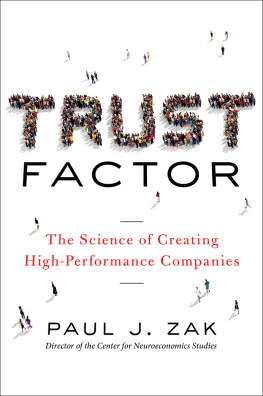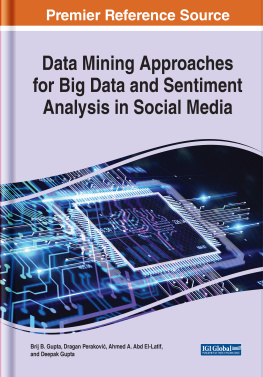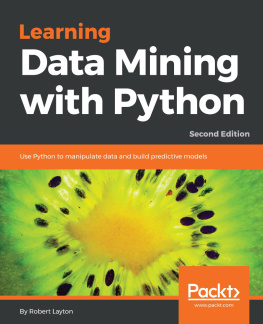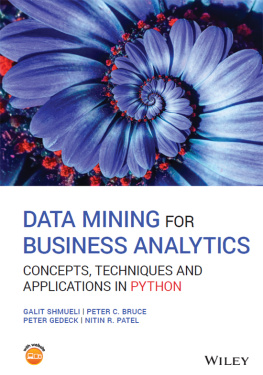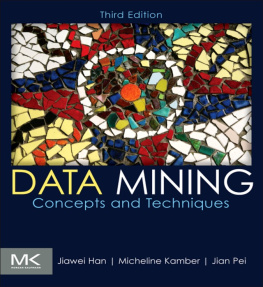Data Mining Concepts and Techniques
Complete Guide to a Comprehensive Understanding of Data Mining
By
Cameron Zak
Copyright 2020 by Cameron Zac- All rights reserved.
This document is geared towards providing exact and reliable information in regards to the topic and issue covered. The publication is sold with the idea that the publisher is not required to render accounting, officially permitted, or otherwise, qualified services. If advice is necessary, legal or professional, a practiced individual in the profession should be ordered.
From a Declaration of Principles which was accepted and approved equally by a Committee of the American Bar Association and a Committee of Publishers and Associations.
In no way is it legal to reproduce, duplicate, or transmit any part of this document in either electronic means or in printed format. Recording of this publication is strictly prohibited and any storage of this document is not allowed unless with written permission from the publisher. All rights reserved.
The information provided herein is stated to be truthful and consistent, in that any liability, in terms of inattention or otherwise, by any usage or abuse of any policies, processes, or directions contained within is the solitary and utter responsibility of the recipient reader. Under no circumstances will any legal responsibility or blame be held against the publisher for any reparation, damages, or monetary loss due to the information herein, either directly or indirectly.
Respective authors own all copyrights not held by the publisher.
The information herein is offered for informational purposes solely, and is universal as so. The presentation of the information is without contract or any type of guarantee assurance.
The trademarks that are used are without any consent, and the publication of the trademark is without permission or backing by the trademark owner. All trademarks and brands within this book are for clarifying purposes only and are owned by the owners themselves, not affiliated with this document.
Table of Contents
Chapter 1: Introduction of Data Mining, How Is This Relevant?
In recent years, data mining has attracted significant interest in the information industry and society as a whole, owing to the broad availability of vast quantities of data and the imminent need to turn these data into essential information and knowledge. The information and expertise gained can be used in applications ranging from market analysis, fraud detection, and consumer retention, to manufacturing control and scientific research.

The evolution of information technology or IT can be seen in data mining. In the development of the following functionalities, the database system industry has witnessed an evolutionary direction (Figure 1.): data collection and database creation, data management (including data storage and retrieval and database transaction processing), and advanced data analysis (including data storage and data mining). For example, the early development of frameworks for data collection and database construction served as a prerequisite for the subsequent development of successful mechanisms for data storage and retrieval, and for query and transaction processing. Advanced data analysis has inevitably become the next goal with various database systems providing query and transaction processing as standard practice.
Database and IT has developed from rudimentary file processing systems to sophisticated and efficient database systems since the 1960s. Since the 1970s, research and development of database systems have progressed from early hierarchical and network database systems to developing relational database systems (where data is stored of relational table structures), data processing techniques, and methods of indexing and access. Additionally, users gained easy and scalable access to data through query languages, user interfaces, streamlined processing of requests, and transaction management. Effective online transaction processing (OLTP) methods, where a query is treated as a read-only transaction, have made a major addition to the development and wide adoption of relational technology as a major tool for effective storage, retrieval, and management of large volumes of information.
Since the mid-1980s, database technology has been characterized by the widespread adoption of relational technology and an increase in research and development activities on modern and efficient database systems. These encourage the development of advanced models of data such as extended-relation, object-oriented, object-relational, and deductive models. Application-oriented database systems have flourished, including a spatial, temporal, digital, active, stream, and sensor databases, knowledge bases, and office information bases. Issues related to distribution, diversification, and data sharing have been extensively studied. Heterogeneous database systems and global information systems focused on the Internet, such as the World Wide Web (WWW), have also arisen and played an important role in the information industry.
Over the past three decades, the steady and remarkable advancement of computer hardware development has led to vast quantities of powerful and inexpensive computers, data processing equipment, and storage devices. This technology offers a great boost to the database and information industry and provides a large number of databases and information servers for transaction processing, information retrieval, and data analysis.
The data can now be stored in several different types of databases and repositories of information. One data center architecture that has arisen is the data warehouse, a center of several heterogeneous data sources clustered at a single location under a centralized scheme to promote decision making in the management. Data warehouse technology includes data integration, data cleaning, and online analytical processing (OLAP), i.e., analytical techniques with functionalities such as summary, consolidation and aggregation, and the ability to view information from different angles. While OLAP tools support multidimensional analysis and decision-taking, in-depth analysis involves additional data analysis tools, such as data classification, clustering, and interpretation of data changes over time. In addition, over and above repositories and data centers, large volumes of data can be collected. Typical examples include the data streams and the World Wide Web (www), where data flows in and out like streams, such as video surveillance, telecommunications, and sensor networks. Effective and reliable data processing in these different forms is becoming a daunting task.
The data abundance, coupled with the need for powerful tools for data analysis, has been characterized as a situation rich in data but poor in knowledge. The exponentially increasing volume of data collected and processed in vast and multiple data repositories have far surpassed our human comprehension capacity without powerful resources. As a consequence, data stored in large data repositories are "data tombs"data archives seldom visited. Consequently, important decisions are often made not on the basis of information-rich data stored in data repositories, but on the basis of the opinion of a decision-maker, simply because the decision-maker does not have the resources to extract the valuable knowledge embedded in the vast amount of data. Additionally, find device development experts who usually depend on users or domain experts to manually insert information into a knowledge base. This method is sadly prone to biases and mistakes and is highly time-consuming and expensive. Data mining tools perform data analysis and can discover essential trends of data, significantly contributing to business strategies, knowledge bases, and science, and medical research. The widening distance between data and intelligence demands a systematic creation of data mining tools that will turn data tombs into knowledge "golden nuggets."



